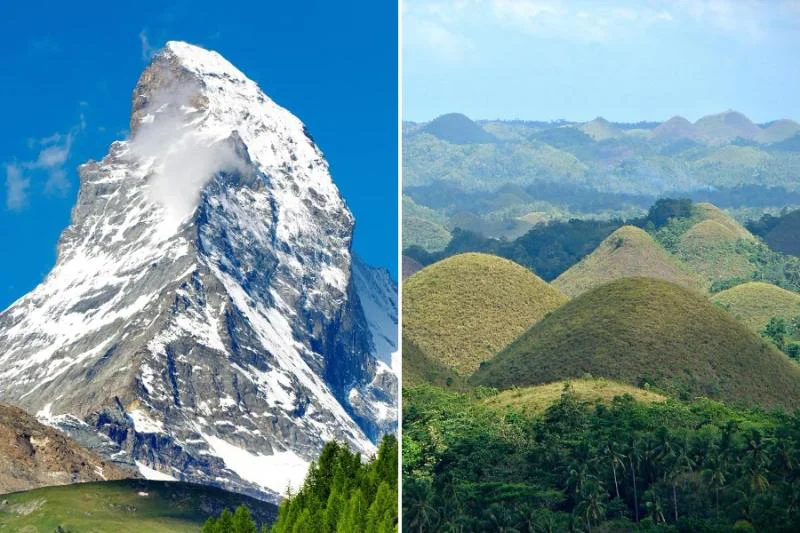Usually, these two are topics of concern. But did you know that mountains are taller and steeper than hills? Rocky peaks and rugged terrain differentiate them. They are usually formed by tectonic activity or volcanic processes and can have extreme weather conditions. Hills are lower and gentler, often created by erosion or sediment deposition and have milder weather conditions. Read on and explore your mind.
What are Mountains?
Mountains have steep slopes, rocky peaks, and great heights. A tectonic activity like plate collisions or volcanic uplift creates them. Mountains have unique ecosystems and wildlife worldwide. Mountains regulate global weather and provide fresh water to many regions. The Himalayas, Andes, Rockies, and Alps are famous mountain ranges. These ranges are tourist attractions and cultural and historical landmarks for locals.
Mountains offer hiking, climbing, skiing, and camping. Timber, minerals, and freshwater are essential economic resources. Mountains are vulnerable to natural disasters like landslides, avalanches, and earthquakes. Climbers and hikers can be endangered by high-altitude weather. Mountaineers face challenges and reap the rewards. For centuries, they have inspired human culture and imagination.
What are Hills?
Hills are elevated areas of land that rise above the surrounding terrain but are typically lower and less steep than mountains. They are characterized by their gentle slopes and rounded peaks and are often formed by erosion or other geological processes. Hills can provide scenic views of the surrounding area and can be popular destinations for hiking, cycling, and other recreational activities. They are also crucial for agriculture, providing fertile soil for crops and grazing land for livestock. Hills are found worldwide; many are home to unique ecosystems and wildlife.
While hills may not be as dramatic or imposing as mountains, they still play an essential role in regulating the global climate and are vital to the natural environment. In many cultures, hills hold spiritual or cultural significance and have been the site of many historical events and battles. Overall, hills are essential to the natural landscape and benefit humans and the environment.
Difference Between Mountains and Hills?
The main difference between mountains and hills is their height and the steepness of the slope. Mountains are typically taller and steeper than hills, characterized by their rocky peaks and rugged terrain. Conversely, hills are generally lower and have gentler slopes, with rounded peaks and valleys. Another difference between mountains and hills is the way they are formed. Mountains are usually formed by tectonic activity or volcanic processes, while hills are often created by erosion or sediment deposition.
Regarding their ecological significance, both mountains and hills can support unique ecosystems and wildlife. Mountains are often associated with extreme weather conditions, such as high winds, cold temperatures, and heavy snowfall, while hills generally have milder weather conditions. Still, mountain ecosystems are often more specialized and adapted to the harsher conditions found at high altitudes. While mountains and hills share similarities regarding their natural beauty and recreational opportunities, they differ in height, steepness, formation, weather conditions, and ecological characteristics.







